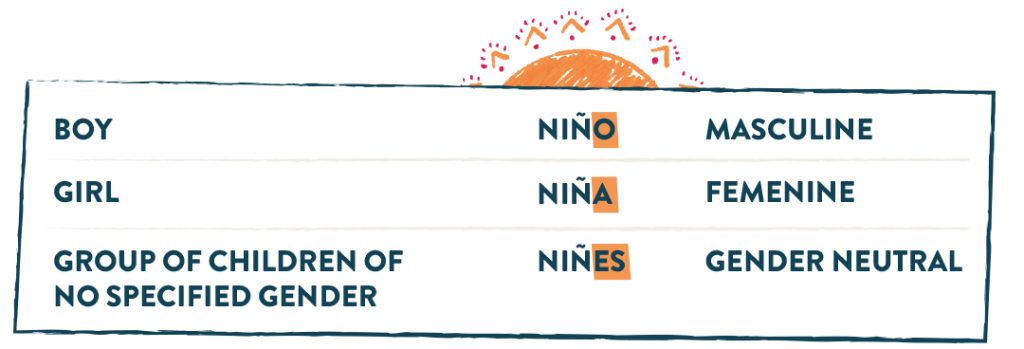In recent years, the term “Latinx” has been proposed — and begun to come into use in the U.S. — as a shift to a more inclusive Spanish language when it comes to gender. In other countries of Latin American and even in Spain, people are also looking for ways to be more inclusive. In order to understand why some people are arguing for a shift towards gender-neutral or non-sexist language, it’s important to look closer at how gender works in the Spanish language and how the language can evolve.
How Gender Works in Spanish
In the Spanish language, all nouns have a gender. Other words used in conjunction with nouns agree in gender as well, so articles and adjectives are also gendered. Typically, masculine nouns end in an O and feminine nouns end in an A. Spanish is not the only language structured like this. Spanish is just one of many gender-based languages that defaults to a generic masculine ending. If the gender of a subject is not specified or known, or if the noun is representing a group with both masculine and feminine members in it, then the masculine ending will be used. For example, in Spanish the word for boy is “niño” and the word for girl is “niña”, but when you have a group of children of mixed genders, the word used would be “niños”.

Inclusion of Female and Non Binary Individuals
Those who are fighting for more inclusion of women and non-binary individuals are changing how they speak and write. In many cases, they are replacing the masculine O and the feminine A with a gender-neutral E. Let’s look at how this may work in practice. The default word for the word friends is “amigos” (which is masculine). Those looking to make changes in the language are using “amigues” instead.

Not everyone wants to see these changes made. The Royal Spanish Academy in Spain wants to leave the current gendered structure of Spanish as is. From their perspective, the default masculine plural is intended to be inclusive and represents females as well as males.
It’s important to highlight, though, that without making formal changes to the language, there are ways to make Spanish more modern and inclusive in everyday life. It does take a little bit of creativity, but workarounds for avoiding using default masculine nouns do exist.
How Should Translators Proceed?

When it comes to translation work, should translators observe the norm or adapt? There is no one correct answer here. Who your audience is will largely influence whether or not you should stick to the traditional structures or should adapt to these modern solutions to making the language more inclusive.
Language is a living entity that changes and evolves over time, it does not remain stagnant. There is room for change, the question is, is your audience ready for that change? While the Royal Spanish Academy may say no, plenty of young individuals are fighting for change. Take your target audience into account when deciding how you want to communicate your message. Will they be more likely to engage with your content if you make gender-neutral changes or will that push them away? Sticking with what your audience is most comfortable with may not please everyone who comes across your content, but will hopefully keep the base of your audience happy. For a translation project to be successful, you need to aim to deliver your message as effectively as possible, so consider how you can make that happen.









